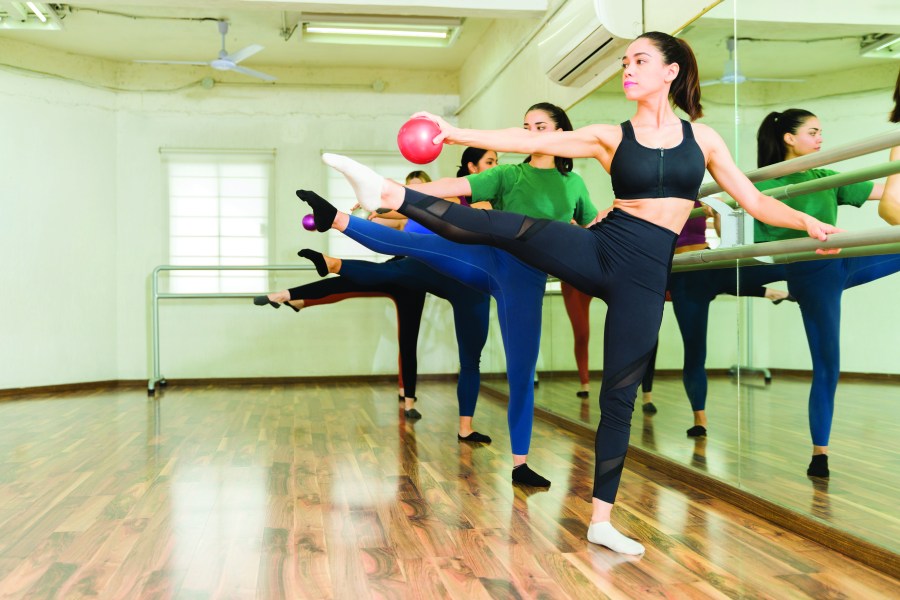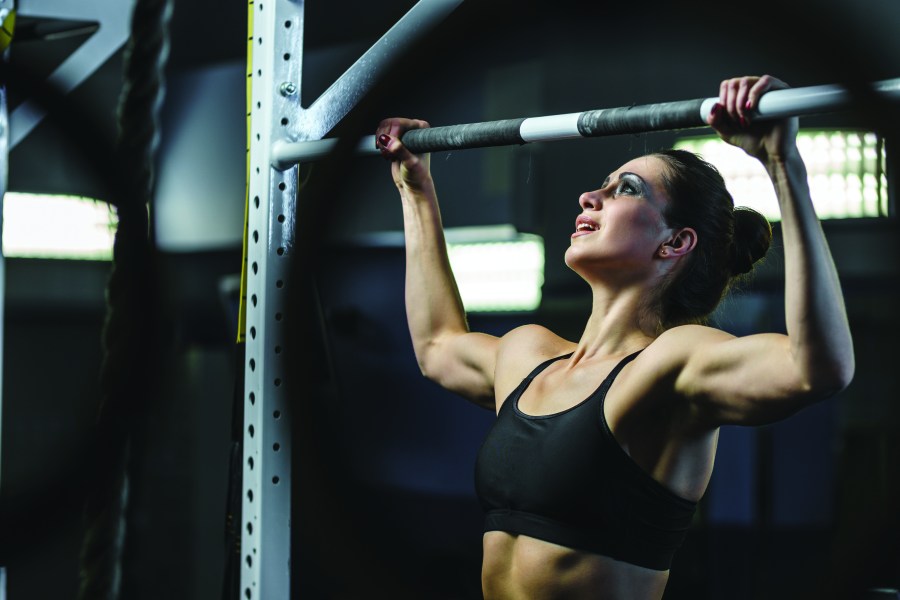You don’t need a heavy barbell to build serious strength. High-rep and light weight training can build lean muscle, support fat loss and boost stamina. Plus, it might be a better method for weight-lifting at home!
Words: Lucy Miller
When it comes to fitness goals, building muscle and burning fat usually top the list, but strength training offers far more than just physical gains. From boosting your metabolism and building lean muscle, to protecting your joints and supporting hormone health, lifting weights benefits every woman whatever her age or ability. But how heavy should you go to feel the benefits? Should you be lifting heavier weights for fewer reps, or reaching for lighter dumbbells and upping the volume?
If you’ve stuck with the same ‘three sets of 10 reps’ for years, or avoided strength training because lifting heavy felt too intimidating or ‘too manly’, there’s good news: you absolutely can build strength and sculpt definition using lighter weights and a higher rep count. Not only that but this style of training might suit your goals and lifestyle better, especially if you’re training at home or don’t have access to lots of weight-lifting equipment.
What’s high-rep training?
High-rep training generally means performing 12-25 or more reps per set, using lighter weights. You’re not lifting to your max but you’re still pushing your muscles to fatigue with repetition and creating that all-important muscle burn.
It’s often thought heavy weights are the only way to build lean muscle, but that’s not the case. According to experts, high-rep training can be just as effective as heavier lifts for improving tone, endurance and strength – when done correctly!
Here’s the science of muscle growth. Strength training works by placing your muscles under stress. When you lift weights, whether heavy or light, your muscles are forced to work harder than usual. This causes microscopic damage to the muscle fibres, which then repair and grow back stronger. This process is known as hypertrophy, and it’s how you build strength and definition over time. But there’s more to it than just the load. Your muscles are made up of two types of fibres: slow-twitch (Type I) and fast-twitch (Type II). These respond differently depending on how you train.
‘Type I fibres are built for endurance,’ explains Dan Roberts, fitness, movement and performance coach and founder of the Dan Roberts Group (danrobertsgroup.com). ‘They’re more resistant to fatigue and respond well to high-rep sets with lighter weights, which helps improve muscular stamina.’
In contrast, fast-twitch fibres are responsible for strength and power. ‘These fibres are recruited more when you’re lifting heavier weights for lower reps,’ says Roberts. ‘That’s where you’ll see greater increases in muscle size and strength.’
While genetics influence your fibre makeup, how you train matters too. High-rep training recruits a mix of both fibre types, particularly as you approach the fatigue stage. This creates metabolic stress, increases time under tension and promotes muscular endurance and hypertrophy, all while using lighter weights.

Why it works
‘Broadly speaking, high-rep training involves 15-50 reps per set using lighter weights – around 50 per cent of your one-rep max,’ says Roberts. ‘While often used for endurance or conditioning, its benefits go well beyond stamina.’
In fact, research supports the case for high-rep training. A 2021 review published in the journal Sports found that lifting lighter weights for more reps can effectively build both muscular endurance and lean muscle. Similarly, a study from McMaster University concluded that training near to failure, whether with light or heavy weights, is what really drives muscle growth.
‘Building muscle takes intensity,’ adds Roberts. ‘If you can generate that intensity with lighter loads, you’ll see results. When people ask me what rep range is best for hypertrophy, my answer is: all of them. It’s not just about the weight – it’s how hard you’re working.’ In other words, you don’t have to lift heavy to get stronger, but you do need to lift with intention.
Who it’s best for
High-rep workouts offer numerous benefits. They help you build lean and defined muscle without having to lift heavy but they also place less strain on your joints – and that makes them ideal for beginners, those returning from injury or anyone looking for a more sustainable strength routine.
‘You don’t need to go heavy to sculpt definition,’ says Roberts. ‘Lighter weights with more reps increase time under tension, which is a key driver of muscle growth.’ This style of training also boosts your cardio fitness: the high-rep range raises your heart rate and challenges your muscular endurance, giving you a full-body burn that feels as much like a fitness class as it does a strength session. And because it requires minimal equipment,
high-rep training is easy to do anywhere – whether you’re short on time or space, or without access to a gym.
‘I’ve trained with resistance bands in hotel rooms and even used water bottles as dumbbells,’ agrees Roberts. ‘Try doing 100 kettlebell swings or walking lunges for five minutes, the muscle burn will be real. That burn is a sign you’re pushing past your usual threshold, and that’s how your body adapts and grows stronger.’
Mentally, high-rep sessions build focus and resilience. They take commitment and control, especially when the burn kicks in, but that’s also what makes them so empowering.
Whether you’re lifting light or going heavy, the key is to challenge your body and stay consistent. Push to fatigue, listen to your body and choose the rep range that suits your goals and your lifestyle. It’s not about how much you lift, it’s how much effort you bring to the table.







